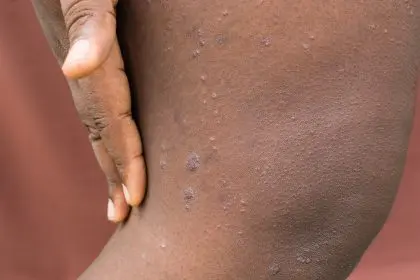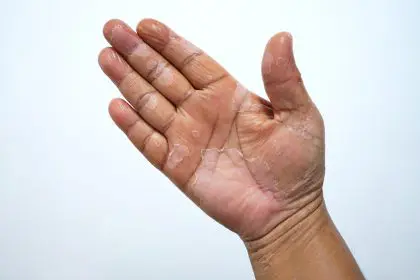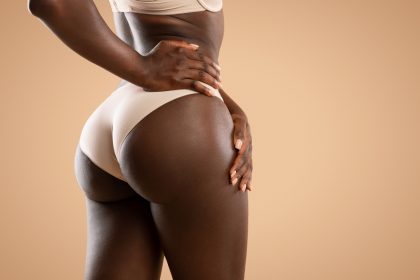When celebrity hairstylist Mark Anderson noticed his A-list client’s increasing concern about hair shedding, he recognized a universal truth: hair loss affects everyone, regardless of status or lifestyle. “People often panic when they see hair in their brush,” Anderson explains, “but understanding the natural cycle can help distinguish between normal shedding and actual hair loss.”
Inside the hidden world of hair growth
The human scalp hosts approximately 100,000 hair follicles, each operating on its own unique cycle. Trichologist Isfahan Chambers-Harris reveals that this intricate system follows a predictable pattern, though individual experiences vary significantly.
Understanding your hair’s timeline
The hair growth cycle consists of three distinct phases:
The anagen phase marks the active growth period, lasting between two to seven years. During this time, hair grows approximately half an inch per month.
The catagen phase represents a brief transition period lasting several weeks, where growth ceases and the follicle begins to shrink.
The telogen phase, lasting three to four months, serves as a resting period before the old hair naturally releases from the follicle.
The genetic connection
Research reveals that genetics play a crucial role in determining hair growth patterns. Dr. Elizabeth Chen, a leading dermatologist, explains that understanding your family history can provide valuable insights into your hair’s future.
Hormones and hair health
Hormonal fluctuations significantly impact hair growth patterns. From pregnancy to menopause, these changes can trigger various forms of hair loss, some temporary and others requiring intervention.
The stress factor
Modern life’s demands can manifest physically through our hair. “Stress-induced hair loss often appears months after a triggering event,” notes Dr. Chen. “This delayed response often confuses patients about the true cause.”
Nutrition’s vital role
The connection between diet and hair health extends beyond simple vitamin supplements. Recent research highlights the complex relationship between nutrient absorption and hair follicle function.
The styling impact
Professional hairstylist Jennifer Lopez (no relation to the singer) witnesses daily how styling choices affect long-term hair health. “What seems like simple styling can actually cause significant damage over time,” she cautions.
Chemical considerations
The impact of chemical treatments extends beyond surface-level changes. Understanding how these treatments affect the hair shaft and follicle helps inform better hair care decisions.
Age-related changes
As we age, our hair undergoes natural transformations. These changes reflect both internal processes and external factors accumulating over time.
The medication effect
Various medications can influence hair growth patterns. Understanding these connections helps patients make informed decisions about their treatment options.
Environmental impacts
Environmental factors, from pollution to water quality, play a significant role in hair health. Protection strategies become increasingly important in urban environments.
The inflammation connection
Recent research reveals surprising connections between inflammation and hair loss, opening new avenues for treatment and prevention.
Breaking the cycle
For those experiencing unusual hair loss, breaking the cycle requires a comprehensive approach. Dr. Chen emphasizes the importance of early intervention.
Signs that matter
While some hair loss is normal, certain signs warrant professional attention. Understanding these indicators helps determine when to seek expert help.
The consultation process
What happens during a professional hair loss consultation? Understanding this process helps patients prepare and maximize their appointment’s value.
Treatment innovations
Modern approaches to hair loss combine traditional wisdom with cutting-edge technology. New treatments emerge regularly, offering hope for various conditions.
Prevention strategies
Proactive measures can significantly impact long-term hair health. Experts recommend specific strategies based on individual risk factors.
The product puzzle
Navigating the vast array of hair care products requires understanding both ingredients and individual needs. Not all products work for everyone.
Natural approaches
While medical interventions have their place, natural approaches to hair health continue gaining scientific support.
The scalp connection
Healthy hair starts with a healthy scalp. Understanding this relationship helps inform better hair care practices.
Future developments
Emerging research continues to reveal new insights about hair loss and potential treatments. The field evolves rapidly, offering new hope for those affected.
Making informed choices
Armed with understanding, individuals can make better decisions about their hair care routines and treatment options.
The emotional impact
Addressing the psychological aspects of hair loss remains crucial for comprehensive treatment. Support systems play a vital role in the journey.
Building a hair care routine
Creating an effective hair care routine requires understanding individual needs and hair characteristics. Personalization proves key to success.
This comprehensive guide aims to empower individuals with knowledge about their hair health journey. Whether experiencing normal shedding or requiring professional intervention, understanding these aspects helps navigate the complex world of hair care with confidence.
Remember, while hair loss concerns many, solutions exist for most conditions. Working with qualified professionals while maintaining realistic expectations leads to the best outcomes. Continue monitoring your hair’s health and don’t hesitate to seek professional guidance when needed.















